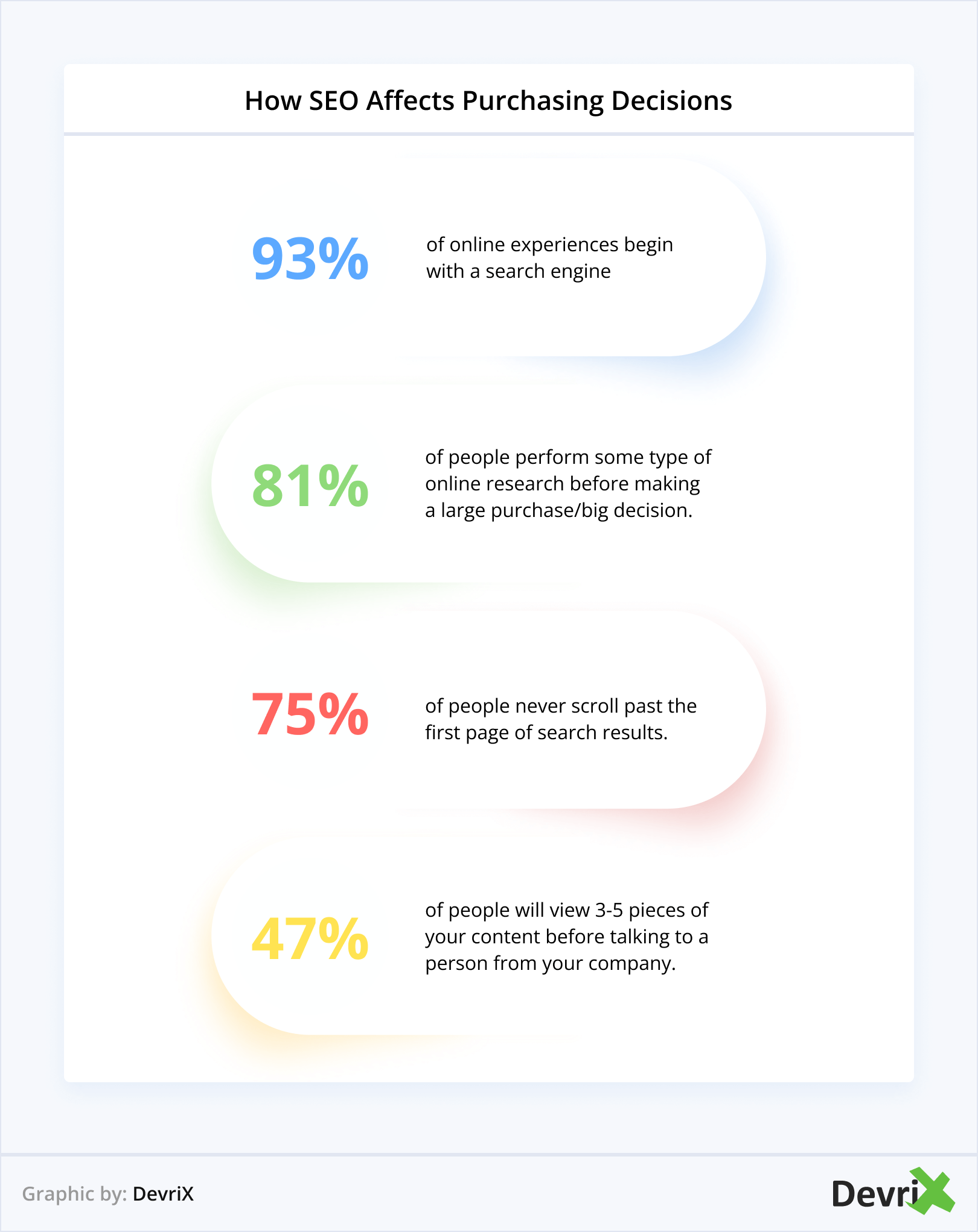Sooner or later, every website owner finds themselves asking the same question:
Do I really need to update my website?
Unlike many other digital-related questions, the answer here is simple:
Yes. Yes, you do.
Building a robust website that looks good, performs well, engages the audience, and serves upon your business goals is not a one off endeavor – it’s an ongoing process.
Your site should be a living breathing element of your digital presence. It should be aligned with the changes in your business objectives and client needs, as well as keep up with technological trends and innovations.
However, once you put this question out of the way, another one immediately takes its place:
How to update a website?
While implementing growth driven design and website structure can turn out to be less expensive and more compelling over the long haul, there are still things to take care of on a regular basis.
You need to regularly update your CMS, check upon your SEO, implement new technical functions according to your needs, and, let’s not forget maintenance.
This way, you can keep on iterating on what you’ve built, and only take upon large updates, upgrades, and redesigns when you really need them.
When Should I Update My Website?

Frequent website updates are essential not only for your digital marketing efforts and competitive edge, but for the health and security of your digital property as well.
Following are some questions that you have to answer to know when to update your website:
Question #1: Can Your Website Outshine the Competition?
Most business owners and marketers are continually watching their rivals and doing their best to remain one step ahead.
By implementing competitive analysis, you can check how your competitors’ websites are performing and what they offer. This can provide valuable insights about your own website:
- Have you fallen behind on your online presence?
- Are you providing a good enough user experience?
- What features do your competitor’s websites provide that yours doesn’t?
- Is your design modern and user-friendly?
If your website doesn’t live up to those of your competitors, you should consider updating it.
Question #2: Is Your Website Optimized for Search Engines?
If your website is not SEO optimized and doesn’t live to the latest technological and content standards of search engines, you should, by all means, update it.
When search engine spiders struggle or fail to read your pages and can’t seem to understand what they are about, they are likely to leave and proceed onward to a better-designed website.
As a result, your website will be positioned lower in the SERPs and may even fall off of them, and fewer users will see your links in the search result.

Question #3: Is Your Site Mobile Friendly?
The percentage of people browsing the internet on mobile devices is incrementally growing . People use their phones for online shopping, checking their emails, researching topics, and whatnot.
If your website is not mobile-friendly, it won’t render properly on people’s phones and tablets. As a result, you will not only drive away potential customers, but may compromise your SEO efforts, because Google uses mobile-first indexing and prioritizes the mobile versions of websites.
This means that if a user conducts a search on a mobile device and your website is not optimized, it may not be shown in the SERP results even if it’s, otherwise, a good fit.
If your customer base falls into the demographics that tends to use mobile devices more often – and nowadays, that’s, practically, everyone – you need to ensure that you cater to their needs and provide a good experience.
Question #4: Does Your Website Align with Your Branding?
Have you ever updated your site to coordinate the look and feel of your recent storefront, adverts, and marketing campaigns? And have you recently gone to major rebranding?
Organizations today are discovering new and more differing channels to interact with their clients and customers, to support and build their brand.
Modern business websites now have newsletters, blogs, video, podcasts, social media connections, online stores, and whatnot.
For your brand to remain recognizable across these channels, you have to maintain branding consistency.
Your website is your digital storefront, so it should be the centerpiece of your efforts. If it’s not – you need to update it.
What to Update on Your Website?
Your site should be useful for your customers, and, as such, should evolve with their needs.
You can utilize Google Analytics, the Search Console, and other relevant tools to track performance and user behavior, and see what aspects of your site are working well and what are missing the mark.
You use the data to inform your decisions and approach and organize the changes accordingly.
What needs to be done depends entirely on the condition of your website. However, the areas to focus on include, but are not limited to.
Update Your CMS and Plugins
It goes without saying that the first and most important thing when updating your website is to always make sure that the core CMS and the plugins are running the latest version.
If you are not tech savvy and you can’t do this yourself, you should consider hiring a web development agency to do this as well as other maintenance services for you.
This way, you will ensure the security of yours and your customers’ data.
Furthermore, with the latest updates, your website will be fully operational and will take advantage of all new features.
Check Up Your Technical SEO
Technical SEO has grown more important over the past few years. That’s because Google has focused on UX and wants to ensure that the results they show in the SERPs can live up to the user’s expectations.
To that end, you should check a number of things such as:
- Core web vitals
- Mobile-friendliness
- Speed optimization
- Meta information
- Schema markup
- Canonical tags
- Navigation
- Information structure
- Plugins
- External and internal links
- XML sitemap
- Redirects
- Ads and interstitials
Quite a list, no?
It is, but it allows you not only to improve search engine performance, but to ensure that your website visitors can successfully engage and interact with your website.
Otherwise, you risk losing their attention for good.
Implement Content Audit
To the user, the functionalities of the website remain somewhat at the background – they are taken for granted, and noticed only if they misperform.
The content, though, is what they really see.
To ensure it makes a good impression, you should consider conducting a content audit and see what needs to be improved.
Implemento keyword research to find out what your audiences are searching online. Then use the insights you collect to make new pages, articles, whitepapers, ebooks, videos, podcasts and more. This way you may better connect with your clients and show that you are not only an expert, but ready and willing to help out.
Furthermore, publishing fresh and relevant content is vital for SEO.
However, when you come across out and/or outdated content, don’t rush to delete it. There are different efficient ways to manage it without hurting your ranking.
Consider Redesigning of Your Site

Web design is imperative for usability and user experience.
To ensure that your website is easy and intuitive to use, you should follow the latest web design trends. This way, your property will not only look good, but will be welcoming to your users.
However, keep in mind that new trends fall out of fashion quickly. That’s why you should avoid going with too extravagant ideas.
First and foremost, the design you choose should match your website type, brand identity, business goals, and audience’s profile.
It should undergo major changes only when you implement rebranding or when you notice that your website starts to look outdated, as compared to leaders in your industry.
If you update the design and functionality of your website too often, this may confuse and frustrate your audience, and drive them away.
Readjust Your Branding
Branding is an important part of your website. To be efficient, it needs to align with your company’s overall style and approach.
Brand consistency across communication channels makes you more recognizable and helps potential customers remember your name and logo.
You should work with the branding experts in your company to ensure that your website matches the provided brand guidelines and properly represents your business.
Furthermore, you should consider collecting customer feedback and intelligence to gauge the attitude of users to your online property, and, if necessary, implement changes to make it more appealing.
This way, your brand will stand out.
Last but not least, you should work on your SEO branding and optimize your website for branded search.
How to Update Your Website
Once you update your CMS and plugins, the main focus of the website updates you implement should be UX, usability, content, and SEO.
Website owners and marketers, more often than not, underestimate how quickly the requirements of search engines change, and what impact this has on their online presence.
Simply put, what worked two months ago may not be relevant today, and these changes that happen in the background, may affect whether or not people see your pages in the SERPs. This, in turn, can cause a drop in your traffic, engagement, conversions, and sales.
However, this doesn’t mean that whenever a new trend emerges or you find an issue, you have to rush into fixing it without a second thought.
Your website is an ecosystem, and every small change may, potentially, reflect on other aspects of performance that don’t seem directly related.
Therefore, website updates have to be approached carefully and with due diligence.
Backup Your Website
Whatever changes and updates you intend to implement, you should always start with backing up your website.
This way, all your data will be preserved, and if something goes wrong, it will be reversible.
So stay on the safe side and always do a backup before you start updating your website.
Audit Your Website
Once the backup is in place, you should audit your website to diagnose what issues need fixing, and where there is room for improvement.
Assessing the structure of your website, meta information, and URLs data is fundamental to figuring out what you need to change.
How to Do:
You can obtain this information by utilizing a tool such as Screaming Frog.
It allows you to crawl your website the way a search engine spider would, and find the issues that may prevent the proper indexing of your pages.
Analyze the report, and list the issues, prioritizing them based on how many and how serious they are.
Implement Changes
Next, you have to review the pages where there are issues and implement the changes
Consider using a tool such as Woorank to further analyze each page and find other potential problems that may affect your ranking. However, the actual work needs to be done manually.
You can also use the Search Console, to cross-reference the results, and better prioritize what pages to work on.
Here are some important things to check:
- Missing page titles
- Page titles more than 512 pixels
- Page titles underneath 200 pixels
- Missing meta description
- Duplicate page titles
- Duplicate URLs
- Missing H1 tags
- Copy H1 labels
- Multiple H1 labels
- Meta descriptions
- Word count
This has to be done for each page that showcases problems.
To ensure efficiency, consider working in badges, and implement similar tasks together. This can help you stay productive, and will reduce possible mistakes.
Additional Checks
Once you implement the changes, you should monitor results and see how the updated pages perform.
To that end, you should regularly conduct a rank check. It measures how your website performs for groups of keywords in search engines.
What to Do:
Look out for significant changes in traffic and keyword performance. If a page was ranking on position one for the target keyword, bounced to position 20, you may have an issue.
Pay special attention for sudden changes or irregular developments by checking these things:
- Did the URL change?
- Is there a change in the content?
- Is there a redirect setup?
- Did you change the meta information?
Revisit the page and find what may have caused the issue, implement changes, and monitor it again.
Can You Update Your Website Yourself?
The simple answer is – it depends.
If you are tech-savvy and know a thing or two about SEO and web development, you may learn to successfully update your website yourself.
However, if you are not, you risk causing irreversible damage, and, instead of fixing issues, you may make them even worse.
Still, doing your own updates has its benefits. For example, you can roll out improvements at whatever point it suits you, and you don’t need to rely on anyone else.
However, while dealing with your own website is exceptionally rewarding, it’s not easy. You need to constantly update your knowledge and skills and stay in the loop of new trends and regulations. The more you learn, the more secure and more compelling your website will be.
At the same time, relying on professional SEO services can save you a lot of time and headaches. Furthermore, you can rely on quicker and more efficient results, because your website will be in the hands of experts who know what they are doing.
Consider the time and resources you can and want to spend on updating your website’s SEO and choose the option that better suits you.
Whatever choice you make, do your best to maintain consistency – if you hire an agency, trust them and let them do their job. If you decide to try your own hand, build a strategy and follow and update it regularly.
How Customers Can Help With the Update
To ensure you implement the right changes, you shouldn’t rely only on website analytics tools. You should, in fact, focus on how to improve the experience of your customers:
- Distribute surveys. Ask people what you can improve on your website, what content they would like you to publish, how they feel about your branding, whether they navigate your pages easily, and so on. This way, you will have first-hand information about what to do better.
- Monitor behavior. Observe how people engage with your website and pages to identify issues and obstacles that compromise the UX. You can implement tools such as heatmaps, and other behavioral analysis, to pull insights and find what areas to improve.
- Conduct market research. By conducting market research, you can find out more about your potential customers, and figure out new ways on how to update your website to attract them and answer their needs.
- A/B test. Test different versions of your website to see how users engage with it, and what delivers better results.
Bottom Line
Updating your website to live up to the expectations of your customers, and search engines, and deliver a stellar user experience is a time-consuming endeavor.
You not only need to have the skills, but need to know your audience well, and keep up with the new developments in SEO.
However, it’s all worth it because, in the end, a robust, good-looking, and well-functioning is vital for your digital reputation.
DevriX offers website maintenance services, if you have any questions related to this, you can send us a message using our contact form.
![How to Update a Website: The When, Why, and Knowhow [SEO Edition]](https://devrix.com/wp-content/uploads/2016/11/When-What-and-How-to-Update-My-Website_-810x340.png)



